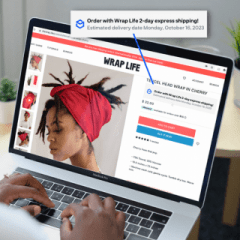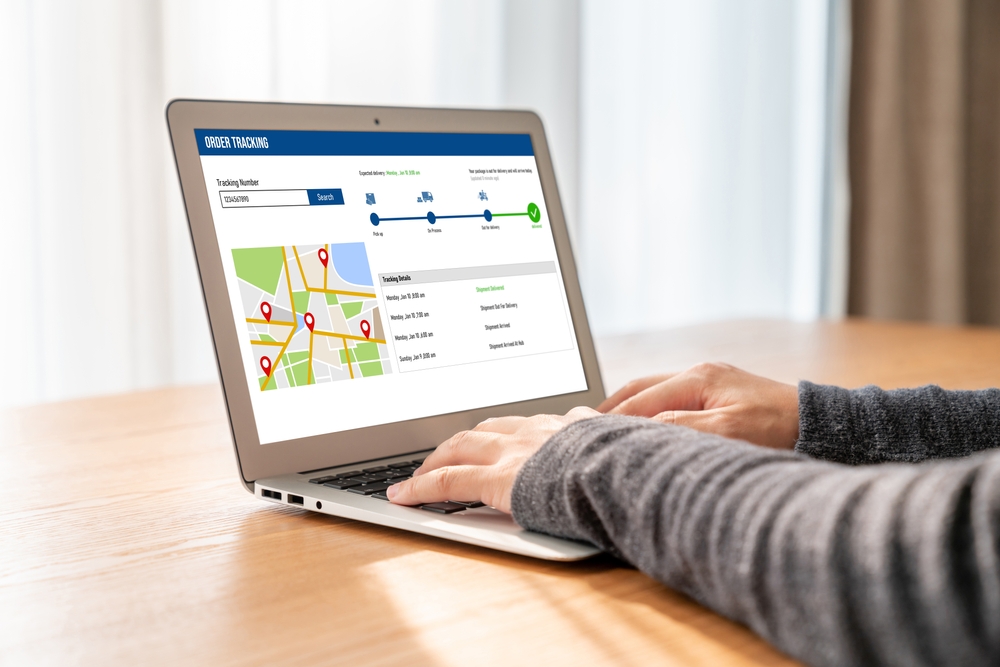Table of Contents
** Minutes
Breaking down the order promising process
Order promising challenges & expert tips
Imagine you’re a customer shopping for a new pair of shoes online. Your previous ones are worn out and unusable so you’d like to get a new pair ASAP. You’re trying to decide between two different pairs from two different businesses: one business promises a delivery date in three days and the other doesn’t give a predefined date at all.
With all else being equal, which would you choose? More times than not, the business that promises a specific delivery date. That’s where order promising comes into play—making sure that what you say matches what you deliver so that you can win over customers.
This guide offers insights to help you better manage inventory and avoid shortages. This way, you can meet your business objectives all the while keeping your customers happy.
What is order promising?
Order promising is the commitment an ecommerce business makes about when an order will be delivered. Businesses use real-time inventory data and logistics planning to give a delivery date right at the point of sale.
For example, when you shop online and see a message like “Order now for delivery by Wednesday,” that’s order promising in action.
The concept requires an understanding of stock levels, supplier capabilities, and shipping networks to ensure that businesses can keep their delivery promises.
Order promising significantly impacts customer satisfaction and business efficiency by ensuring that customers have clear expectations. Thus, minimising the likelihood of order cancellations or customer dissatisfaction due to vague or unmet delivery timelines.
Order promising unlocks a formidable competitive edge
Order promising is a big deal in ecommerce. If you can tell your customers when their orders will arrive and actually stick to it, you’re going to stand out. It’s all about smartly managing where your products are and how fast you can get them to your customer’s doorstep.
Take the example of an online shop that sells diapers (when parents need them they need them, fast). By spreading their inventory across different spots closer to where their customers are, they can get orders shipped and delivered quicker.
This isn’t just good for making customers happy because they get their packages sooner; it also shows that the shop is reliable and thoughtful about getting orders to customers efficiently. Therefore, potentially increasing customer return rates.
Breaking down the order promising process
The order promising process includes a chain of events that ensures each customer’s order can be fulfilled and delivered on time.
The essence of this process revolves around two key concepts: Available to Promise (ATP) and Capable to Promise (CTP). Here’s how they work together from start to finish.
Available to promise (ATP)
The first step involves checking the available inventory to determine if a product is in stock. ATP is a calculation that considers the current stock levels minus the already committed stock to other orders.
This provides a clear picture of what’s immediately available to promise to new orders. For instance, if you have 100 units of a product and 40 are already awaiting fulfilment, your ATP is 60 units.
When a customer places an order, your inventory management system should automatically review the ATP to confirm if the requested product is available.
Capable to promise (CTP)
If the ATP confirms availability for order fulfilment, the process moves to the CTP phase. This step assesses the company’s production capacity and supply chain management system to ensure the order can be produced or procured and shipped within the promised timeline.
CTP is critical for products that are not immediately available but can be made or restocked in a predictable timeframe. It factors in manufacturing times, supplier capabilities, and goods in transit.
After confirming the product is available (ATP) and ensuring the production or procurement capabilities (CTP) align with the customer’s requested delivery date, the business can confidently make a delivery commitment.
Order promising challenges & expert tips
Order promising faces several hurdles, but tackling these effectively can significantly boost operational efficiency.
Balancing inventory and demand
One major challenge relates to inventory management. The gist of the challenge is keeping just the right amount of stock to meet customer demand without overstocking or running out. This is where inventory management software steps in.
At ShipBob, we use in-house software for inventory management. With a decade of experience in the shipping industry, we believe a tool like this is vital because it has the functionality of offering real-time insights into stock levels.
It also makes it significantly easier to calculate inventory distribution and track SKU levels across multiple warehouses or platforms.
Lack of fulfilment flexibility
A rigid, one-size-fits-all fulfilment strategy can lead to inefficient shipping routes and longer delivery times.
A fulfilment network spread across multiple locations grants businesses an easy allocation of their inventory closer to customers, making it much easier to match those order promise dates.
This approach of distributed inventory results in optimisation of shipping routes, cuts down on delivery times, and can lead to significant savings on shipping costs.
ShipBob’s global fulfilment network offers this flexibility in fulfilment operations and delivery management, making it easier for businesses to enhance their delivery promises no matter where customers are located.
Complex returns processes
The returns process is another area that, while not directly linked to sales order promising, plays a crucial role in the overall customer experience.
In 2019, 48% of customers returned the products they bought online. This resulted in a massive $369 billion in losses.
To optimise your returns process and reduce potential losses, it’s worth investing in upgrading your customer service, using better software for inventory management, and making sure your return policy is easy to understand and easy to find on your website.
ShipBob can help you win customers with order promising
Order promising is crucial for anyone managing an online store because it deeply affects how customers view your reliability and service. That’s why at ShipBob, we bring a suite of tools and services that speak directly to these needs.
Global fulfilment network
ShipBob’s global fulfilment network is developed with a clear goal of reaching more customers faster and at a lower cost. With a presence in three continents and 200+ countries, ShipBob empowers e-commerce businesses to scale internationally without the usual logistical nightmares.
This means that no matter where your customers are, you can reach them efficiently. ShipBob’s aim is to help reduce the time it takes for your products to get from the warehouse to your customer’s doorstep.
2-Day express shipping program
From reducing order cycle time to partnering with lighting fast last-mile shipping providers, ShipBob’s two-day fulfilment is what can take your order promising to the next level. This express shipping program is designed to meet the rising expectations of customers who value speed and efficiency.

The results speak for themselves—upon joining forces with The Wrap Life, they reported a 230% surge in customers using 2-day shipping.
Real-time inventory management
Accurate inventory tracking guarantees that you always know what’s in stock, ensuring that you maintain a healthy fill rate and prevent backorders or stockouts. This level of control is vital for maintaining the trust you’ve built with your customers through reliable order promising.
ShipBob uses in-house software so everything is connected—good inventory management leads to better order accuracy, which in turn leads to higher levels of customer satisfaction and loyalty.

Seamless integration with powerful ecommerce platforms
ShipBob is an official partner of Shopify, Walmart, Amazon, eBay, and multiple other retail partners and platforms. These integrations streamline order processing, ensuring that from the moment a customer places an order to the moment it’s delivered, everything runs smoothly.
With ShipBob, you have a partner that not only understands the importance of efficient order fulfilment but also provides the knowledge, apps, and integrations to make it happen.

Get started with ShipBob
If you’re ready to partner with a best-in-class fulfilment partner, request a quote to connect with our team and get started.
Order promising FAQs
Here are answers to commonly asked questions about order promising.
What is order promising and why is it important for ecommerce businesses?
Order promising tells customers when they can expect their orders to arrive. It’s key for online stores because it helps set clear expectations, making shoppers more likely to buy and be happy with their purchases. Getting this right means fewer complaints, more trust, and customers coming back.
How does ShipBob’s order fulfilment process work with different ecommerce platforms?
ShipBob is directly partnered with over a dozen online marketplaces and platforms, including Shopify, Amazon, eBay, and Walmart. This allows for a two-way flow of information for order importation and data exchange.
ShipBob also accommodates order management from platforms without direct integration through middleware solutions such as ShipStation. This connectivity ensures a smooth multi-channel fulfilment process.
How does ShipBob unlock flexible and reliable order promising?
ShipBob enhances flexible and reliable order promising by leveraging advanced technology to offer real-time inventory management, optimised shipping solutions, and seamless integration with various online ecommerce platforms.
What is the difference between order promising and order fulfilment?
Order promising refers to the commitment made to the customer about when an order will be delivered. It involves calculating delivery dates based on inventory levels and logistics capabilities.
Order fulfilment, however, is the process of preparing, packaging, and shipping the order to meet that promised delivery date. While order promising sets expectations, order fulfilment works to meet the target lead time.





